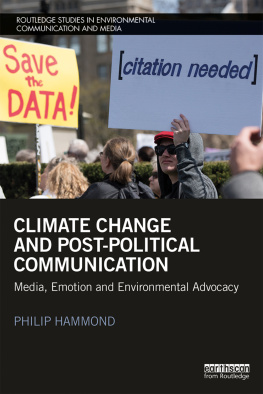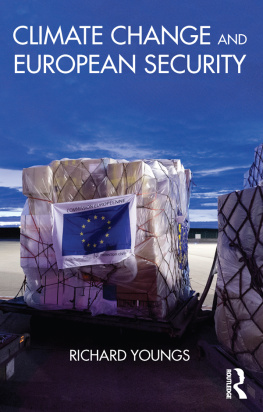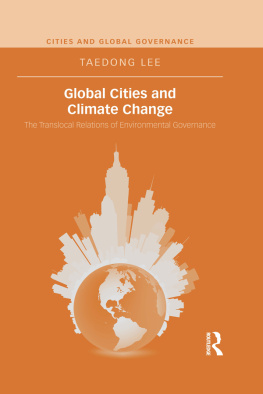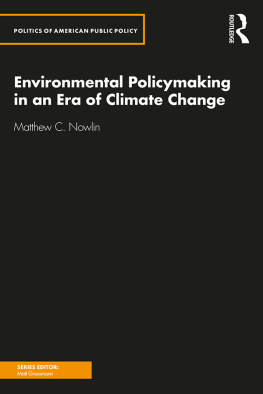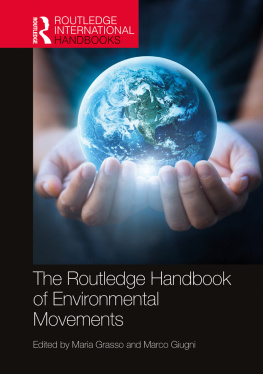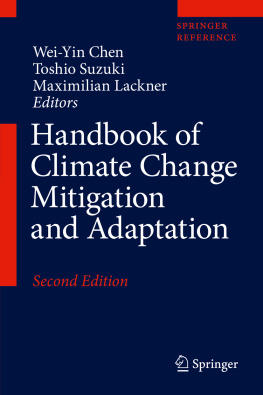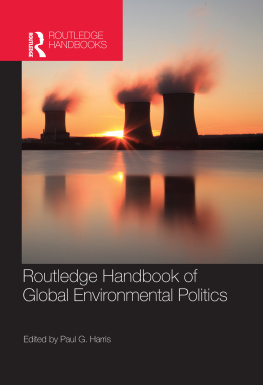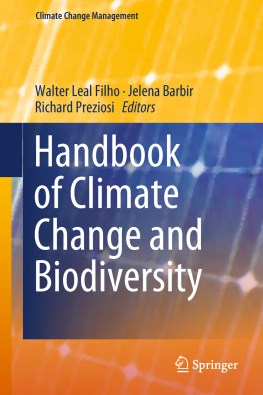
The Routledge Handbook of the Bioarchaeology of Climate and Environmental Change
This handbook examines human responses to climatic and environmental changes in the past, and their impacts on disease patterns, nutritional status, migration, and interpersonal violence. Bioarchaeologythe study of archaeological human skeletonsprovides direct evidence of the human experience of past climate and environmental changes and serves as an important complement to paleoclimate, historical, and archaeological approaches to changes we may expect with global warming.
Comprising 27 chapters from experts across a broad range of time periods and geographical regions, this book addresses hypotheses about how climate and environmental changes impact human health and well-being, factors that promote resilience, and circumstances that make migration or interpersonal violence a more likely outcome. The volume highlights the potential relevance of bioarchaeological analysis to contemporary challenges by organizing the chapters into a framework outlined by the United Nations Sustainable Development Goals for 2030. Planning for a warmer world requires knowledge about humans as biological organisms with a deep connection to Earths ecosystems balanced by an appreciation of how historical and socio-cultural circumstances, socioeconomic inequality, degrees of urbanization, community mobility, and social institutions play a role in shaping long-term outcomes for human communities.
Containing a wealth of nuanced perspectives about human-environmental relations, the book is key reading for students of environmental archaeology, bioarchaeology, and the history of disease. By providing a longer view of contemporary challenges, it may also interest readers in public health, public policy, and planning.
Gwen Robbins Schug is Professor of Anthropology at Appalachian State University, USA.
The Routledge Handbook of the Bioarchaeology of Climate and Environmental Change
Edited by
Gwen Robbins Schug
First published 2021
by Routledge
2 Park Square, Milton Park, Abingdon, Oxon OX14 4RN
and by Routledge
52 Vanderbilt Avenue, New York, NY 10017
Routledge is an imprint of the Taylor & Francis Group, an informa business
2021 selection and editorial matter, Gwen Robbins Schug; individual chapters, the contributors
The right of Gwen Robbins Schug to be identified as the authors of the editorial material, and of the authors for their individual chapters, has been asserted in accordance with sections 77 and 78 of the Copyright, Designs and Patents Act 1988.
All rights reserved. No part of this book may be reprinted or reproduced or utilised in any form or by any electronic, mechanical, or other means, now known or hereafter invented, including photocopying and recording, or in any information storage or retrieval system, without permission in writing from the publishers.
Trademark notice: Product or corporate names may be trademarks or registered trademarks, and are used only for identification and explanation without intent to infringe.
British Library Cataloguing-in-Publication Data
A catalogue record for this book is available from the British Library
Library of Congress Cataloging-in-Publication Data
A catalog record has been requested for this book
ISBN: 978-1-138-49248-6 (hbk)
ISBN: 978-1-351-03046-5 (ebk)
Typeset in Bembo
by Newgen Publishing UK
To my family and friends. You make life brighter. Thank you for your inspiration, patience, and love.
Contents
Gwen Robbins Schug
PART I
Good health and well-being
Charlotte A. Roberts
Molly K. Zuckerman and Ashley C. Dafoe
Anne Marie E. Snoddy, Charlotte L. King, Sin E. Halcrow, Andrew R. Millard, Hallie R. Buckley, Vivien G. Standen, and Bernardo T. Arriaza
Elizabeth Berger and Hui Wang
Gun Zoga and Kimmarie A. Murphy
Anna M. Davies-Barrett, Daniel Antoine, and Charlotte A. Roberts
Chryssa Bourbou
PART II
Socioeconomic and gender equality, no poverty or hunger
Kenneth C. Nystrom and Gwen Robbins Schug
Sharon N. DeWitte
Britney Kyle and Laurie Reitsema
Anna J. Osterholtz
Megan A. Perry and Emily Edwards
Megan Miller, Gwen Robbins Schug, Luca Pagani, and Nicola Carrara
PART III
Peace, justice, and strong institutions
Rebecca Redfern
Debra L. Martin and Ryan P. Harrod
Marin A. Pilloud, Al W. Schwitalla, and Kristen A. Broehl
Christina Torres-Rouff
Sara L. Juengst
Hisashi Nakao, Tomomi Nakagawa, Kohei Tamura, Yuji Yamaguchi, Naoko Matsumoto, and Takehiko Matsugi
PART IV
Life on land
Mark James Hudson
Jacqueline T. Eng and Mark Aldenderfer
Angela R. Lieverse
Lesley A. Gregoricka
Adam W. Schneider, Andrew D. Somerville, . Dilek Erdal, Yilmaz S. Erdal, and Guillermo Algaze
Michelle Hrivnyak and Jacqueline T. Eng
Judith Littleton, Gina McFarlane, and Melinda S. Allen
Mark Aldenderfer is the Edward A. Dickson Emeriti Endowed Chair and Distinguished Professor Emeritus of Anthropology at the University of California, Merced, USA. His research focuses on the comparative analysis of high-altitude cultural and biological adaptations from an archaeological perspective. He has worked on the three high-elevation plateaus of the planetEthiopian, Andean, and Tibetanand currently works in the High Himalayas of Nepal. He has edited or written numerous books, articles, and book chapters. His research has been featured widely in the media, including the 2017 documentary film Secrets of the Sky Tombs, which was produced by PBS/NOVA.
Guillermo Algaze is Distinguished Professor in the Department of Anthropology at UC-San Diego, USA. He is an archaeologist who specializes in the dynamics of economic interaction, early state formation, and colonialism in Late Chalcolithic and Early Bronze Age Greater Mesopotamia, and the director of excavations from 1991 to 1999 at the site of Titri Hyk in the Lower Turkish Euphrates Valley.
Melinda S. Allen is Professor of Archaeology at the University of Auckland, New Zealand. Her research interests are in the area of human paleoecology, with a focus on island colonization, the development of socio-natural ecosystems, and inter-species relations. Her field studies have been trans-Pacific but currently involve projects in the Marquesas Islands, the southern Cook Islands, and Aotearoa New Zealand. She is enthusiastic about interdisciplinary collaborations, which often lead to novel analytical and conceptual approaches that provide new insights into long-term human ecodynamics.
Daniel Antoine is the British Museums Curator of Bioarchaeology, with responsibility for the Museums collection of human remains. Before joining the Museum in 2009, Daniel was at the Institute of Archaeology, University College London, where he gained his PhD in 2001. He has published widely on dental anthropology, bioarchaeology, and paleopathology, including


